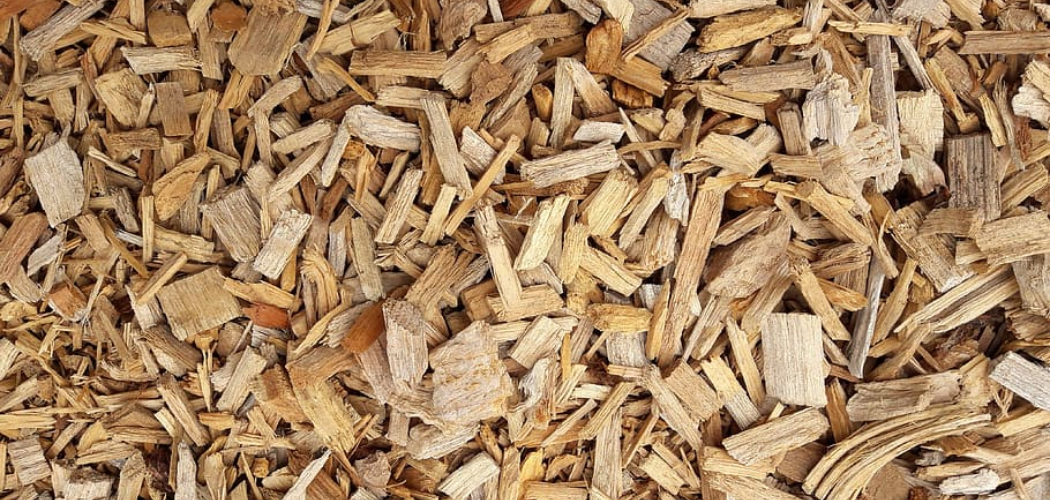Have you ever had a tree felled in your yard or perhaps recently renovated your deck and now find yourself with a pile of wood chips that need to be disposed of? If so, it’s time for you to learn the best ways to eliminate wood chips responsibly.
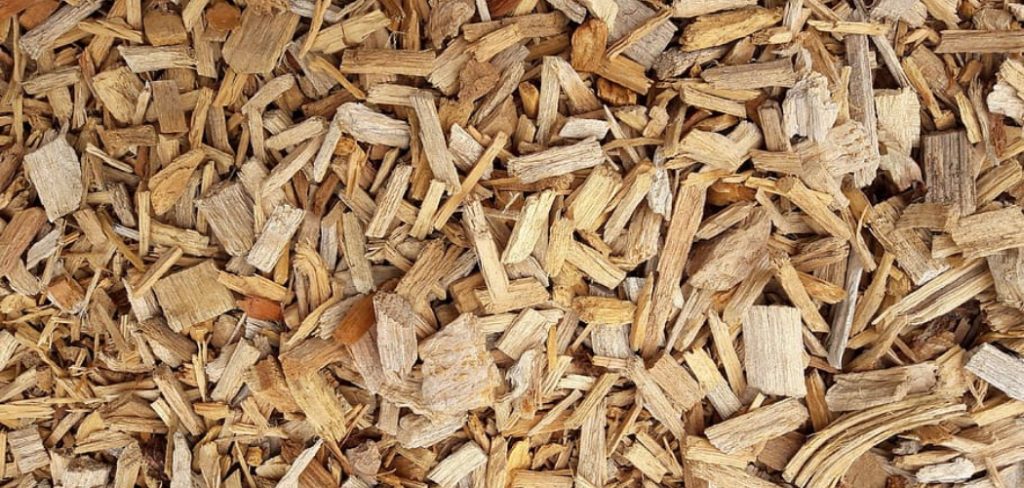
Whether you are disposing of wood chips from a tree or deck, there are multiple ways to eliminate them. The most common and environmentally-friendly way is to compost the wood chips in your backyard or at a local composting site.
In this blog post, we’ll cover the various options available to help make disposing of your excess wood chip debris easy and stress free. From compostable materials solutions to donation sites and eco-friendly removal methods, read on for everything you need to know about how to dispose of wood chips in no time!
What are the Uses for Wood Chips?
Wood chips can be used in a number of different ways. Some of the most common uses include:
- Landscaping/gardening mulch
- Biofuel and energy production
- Injection molding material
- Animal bedding material
- Soil amendment or soil conditioners
- Filtration materials
- Mulching material for trees and plants
No matter what you use your wood chips for, it’s important to ensure that they are disposed of properly.
10 Easy Steps on How to Dispose of Wood Chips
Step 1. Call Local Waste Management Provider:
Before you do anything else, call your local waste management provider to see if they offer a wood chip pickup service. This will make disposing of the wood chips much easier and more affordable. Try to find out any fees associated with this service, how long the pickup will take, and if they require that the wood chips be in certain containers or bags.
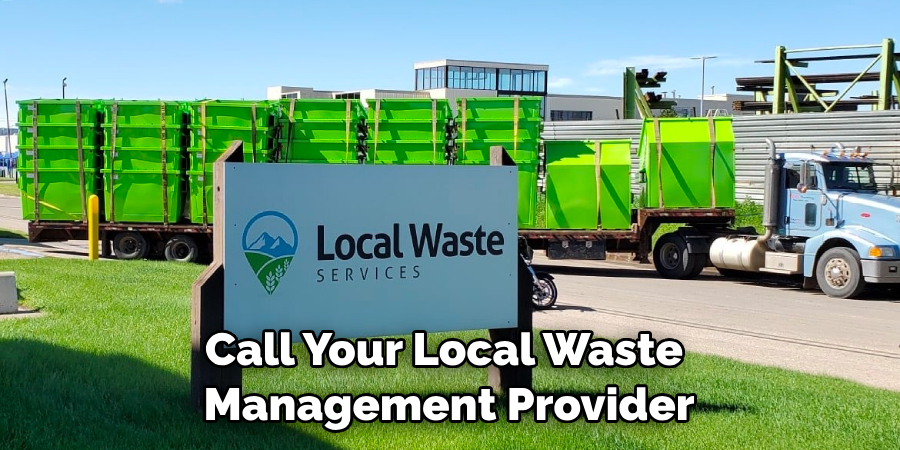
Step 2. Compost Wood Chips:
Composting is one of the most eco-friendly methods for disposing of wood chips. Whether you compost them at home or an off-site composting facility, the wood chips will eventually break down and turn into nutrient-rich soil. Remember that the process can take up to a year for wood chips to decompose into compost fully.
Step 3. Donate Wood Chips:
Donating your wood chips is another great way to dispose of them responsibly. Many organizations accept wood chips for composting or use in landscaping projects. Contact your local gardening store, nursery, or even city hall and see if they would be willing to take the wood chips off your hands.
Step 4. Create a Fire Pit:
If you don’t have access to a waste management provider, composting facility, or donation sites, creating a fire pit is the next best option for disposing of your wood chips. Ensure you follow all safety precautions and use a designated area away from buildings and flammable substances. If you burn the wood chips in a controlled environment, this is the safest way to eliminate them.
Step 5. Dispose at Landfill Site:
In some cases, your local landfill may allow you to dispose of wood chips; however, this should be your last resort, as landfills are not ideal for disposing of wood chips due to their long decomposition times. Also, landfills often need to be equipped to handle the waste generated from wood chips.
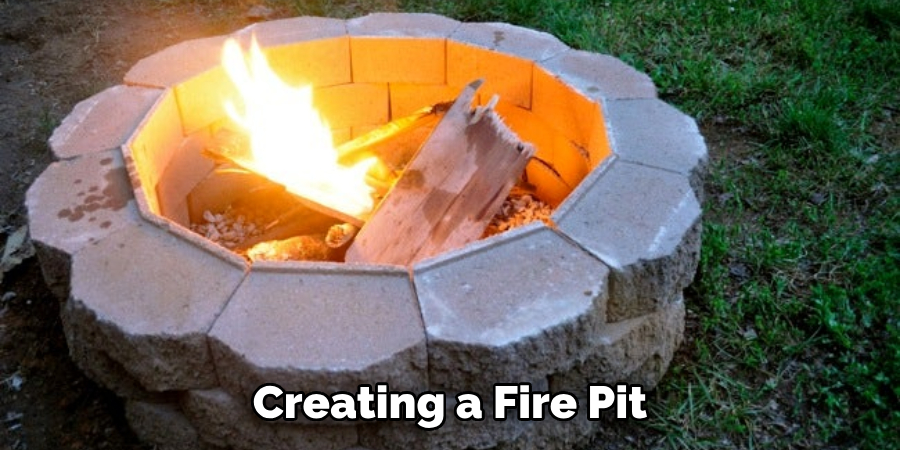
Step 6. Use a Chipper:
Using a chipper is another way to dispose of your wood chips quickly and efficiently. Since the chipper will reduce the size of the wood chips, you can easily transport them for disposal at a local landfill or composting facility. Remember to wear eye protection and safety gloves when operating a chipper.
Step 7. Recycle Wood Chips:
Recycling the wood chips is another great option if you have access to a wood chipping machine. The chips can be used for mulching, landscaping, and energy production. This also ensures that your wood chips are not unnecessarily sent to a landfill.
Step 8. Use Wood Chips for Energy Production:
Wood chips can create energy and fuel through wood pellets, briquettes, or logs. This is an eco-friendly way to dispose of your wood chips while providing a renewable energy source for your home or business. Remember that this requires specialized equipment and an energy source such as a boiler or furnace.
Step 9. Create a Pathway:
If you have excess wood chips, consider creating a pathway! This is a great way to reuse the wood chips while also adding value to your property. You can use the wood chips as a base for gravel pathways or as a decorative topping for stone pathways.
Step 10. Hire a Junk Removal Company:
If all else fails, you can always hire a junk removal company to dispose of your wood chips. This may be the most expensive option, but it is also the most convenient and hassle-free way to get rid of your extra wood chips without worrying about any logistics. Remember to always check the reviews and reputation of any company before hiring them.
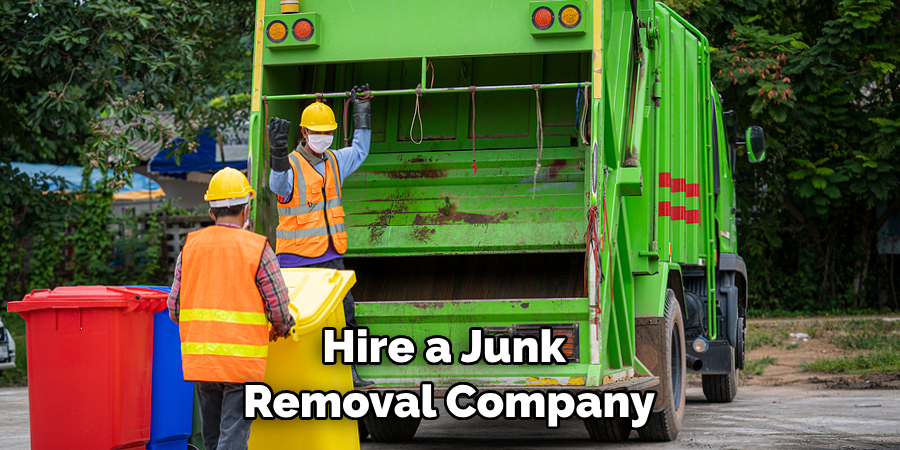
Now that you know how to dispose of wood chips, it’s time to remove those excess piles! Whether you choose to compost, donate or hire a professional junk removal service, make sure that you take the necessary steps to dispose of your wood chips responsibly.
5 Additional Tips and Tricks
- Wood chips can be reused in various creative ways. Try using them to create a garden border, for instance.
- Composting is another way to dispose of wood chips sustainably and efficiently.
- Instead of throwing wood chips away, consider using them as mulch around trees and plants in your yard or garden.
- If you can access a wood chipper that can reduce larger logs and branches into smaller chips, you can use the resulting material as fuel for your fireplace.
- If there are other options than these options, contact your local waste management company or compost center for advice on the disposal of wood chips safely and correctly in your area.
Wood chips are versatile materials that can be used in various ways, so it’s important to consider the best disposal options carefully. Wood chip disposal can be done safely and sustainably with careful consideration and responsible waste management practices.
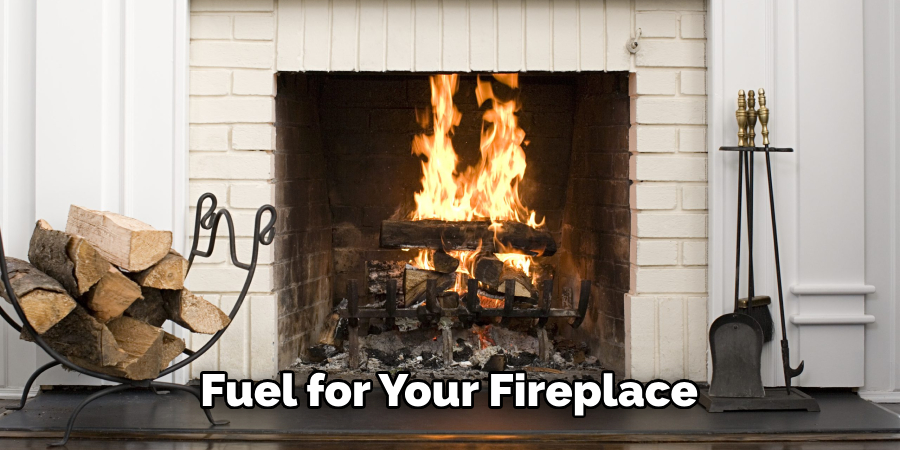
5 Things You Should Avoid:
- Never burn wood chips; they can release harmful toxins into the air that are hazardous to your health.
- Do not put wood chips in your garbage; this could contaminate other items and potentially cause costly damage.
- Avoid disposing of wood chips in water or near bodies of water, as this could harm local wildlife and vegetation.
- Do not throw wood chips into the street or public areas; this is considered littering and can result in fines.
- Never dump wood chips near wildlife habitats, as this could cause serious environmental issues for the area.
By following these tips when disposing of wood chips, you can ensure that your waste is handled responsibly without posing a risk to the environment or public safety.
Is Wood Chips Biodegradable?
Wood chips are biodegradable and decompose relatively quickly depending on their size and composition. Smaller chips may take several months to a year to break down completely; however, larger chunks can take upwards of three years or more. Composting is the most efficient way to ensure that your wood chips are decomposed in an environmentally-friendly manner.
If wood chips are not properly composted, they can leach chemicals and other toxins into the soil, which can be harmful to nearby plants and animals.
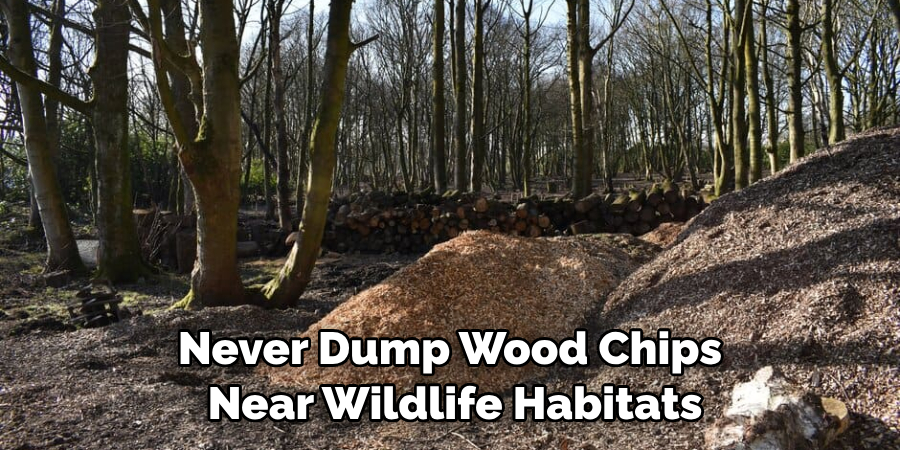
Additionally, decomposing wood chips in an uncontrolled environment can also lead to air pollution due to the release of methane gas. To avoid these risks, it’s best to dispose of your wood chips responsibly either through a composting facility or a professional junk removal service.
Knowing the disposal of wood chips is important to maintaining a healthy and safe environment. With the right resources and knowledge, you can ensure that your wood chips are disposed of properly while protecting the environment from any potential harm. So, take some time to research the best disposal methods for your situation and take the necessary steps to ensure that your wood chips are disposed of correctly.
By taking responsibility for disposing of your wood chips, you can help keep our environment and communities safe for future generations. So, do your part in helping the planet by properly disposing of all your wood chips today.
Do Wood Chips Harmful to the Environment?
Yes, wood chips can be harmful to the environment if not disposed of properly. When left in open piles, wood chips can release a variety of volatile organic compounds (VOCs) into the atmosphere.
These VOCs are released by fungi and bacteria living within wood chippings and can negatively affect humans. Additionally, when wood chips are piled too high and left without ventilation, they can produce methane gas, a major contributor to global warming.
Therefore, it is important to dispose of your wood chips in an eco-friendly way. The best way to do this is by composting your wood chips or hiring a professional junk removal service to take care of your disposal. This way, you can ensure that your wood chips are disposed of correctly and don’t cause any harm to the environment.
No matter what option you choose, it is always important to be mindful of how your waste affects the environment around you. Taking steps towards responsible waste management practices helps reduce our environmental footprint and ensures a better future for future generations. So, do your part by safely disposing of your wood chips today!
How Can You Make Compost from Wood Chips?
Composting wood chips is a great way to reduce waste and create nutrient-rich soil for your garden. To make compost from wood chips, you will need to build a pile of the wood chips and leave it in an area where it can be exposed to air. You will also need a source of nitrogen (such as grass clippings or manure) and a source of carbon (such as leaves).
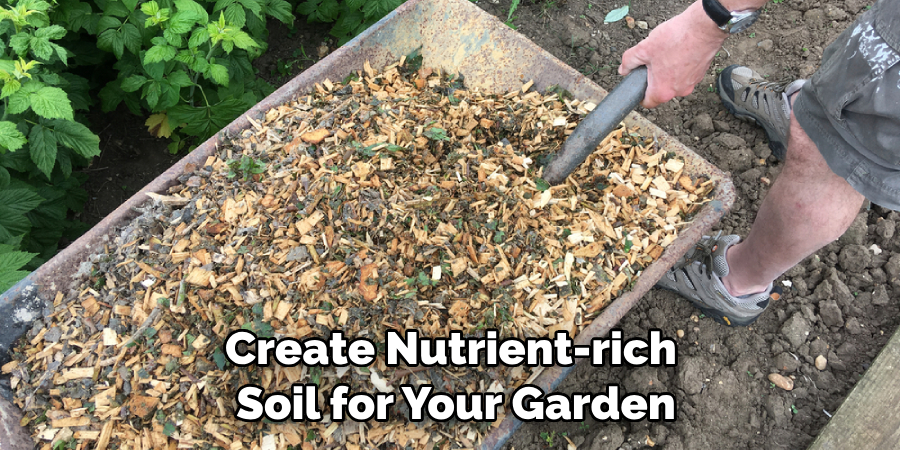
First, layer your wood chips and nitrogen sources in the compost pile, alternating between the two materials. Then, add water to moisten the pile and mix it with a shovel or garden fork. Once everything is combined, it should be damp but not too wet. Finally, cover your pile with a tarp or burlap sack and leave it to sit for at least three months.
When the compost is ready, it should have a dark, crumbly texture and smell earthy. You can use the compost on your garden beds or mix it into potting soil to create nutrient-rich soil for your plants.
Composting wood chips is a great way to reduce waste while creating healthier soil for your garden. With the right materials and guidance, you can turn your wood chips into nutrient-rich compost that will benefit your plants and the environment!
Properly disposing of wood chips with responsible waste management practices can help protect our environment and ensure a better future for our planet.
Conclusion
All in all, wood chips can be great for gardens and help to improve soil health. However, knowing how to properly dispose of your wood chips when you are done with them is important. With the tips provided here, you hopefully better understand what will work best for your situation.
Disposing of these wood chips can help to reduce fire risk from dry debris, prevent unwanted pests from taking up residence in them and also help to protect local wildlife habitats. It is our responsibility as stewards of the land to take good care of our environment and ensure that resources are recycled and reused appropriately.
So the next time you finish up with your bag of wood chips, remember – to put safety first and choose one of these disposal methods to ensure that the land is taken care of!
Hopefully, the article on how to dispose of wood chips has been useful to you and has provided some helpful tips on how best to deal with them. With the right knowledge, everyone can take responsibility for their wood chips and help keep our environment safe for future generations. Thanks for reading and have a great day!

